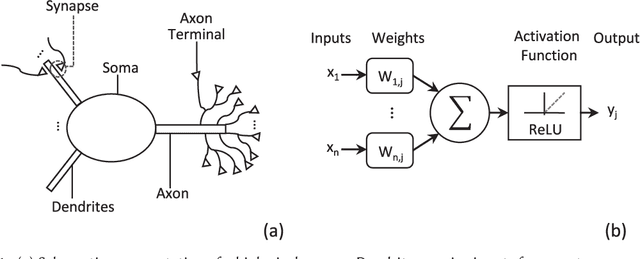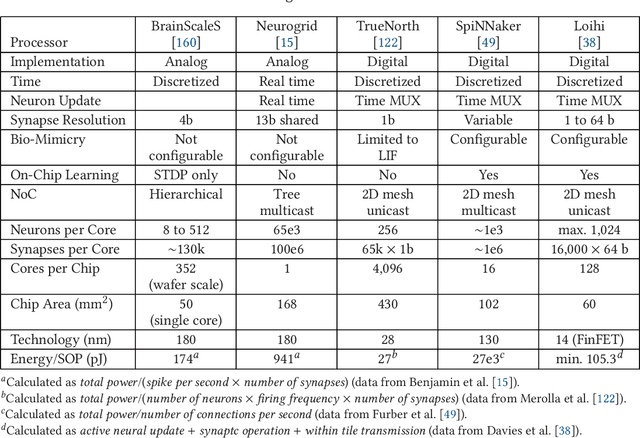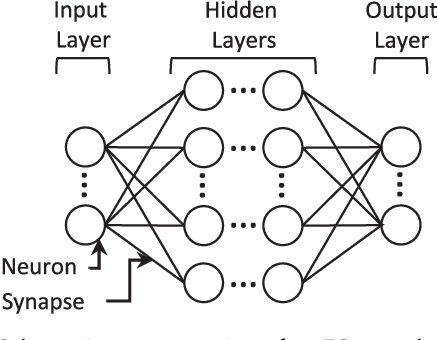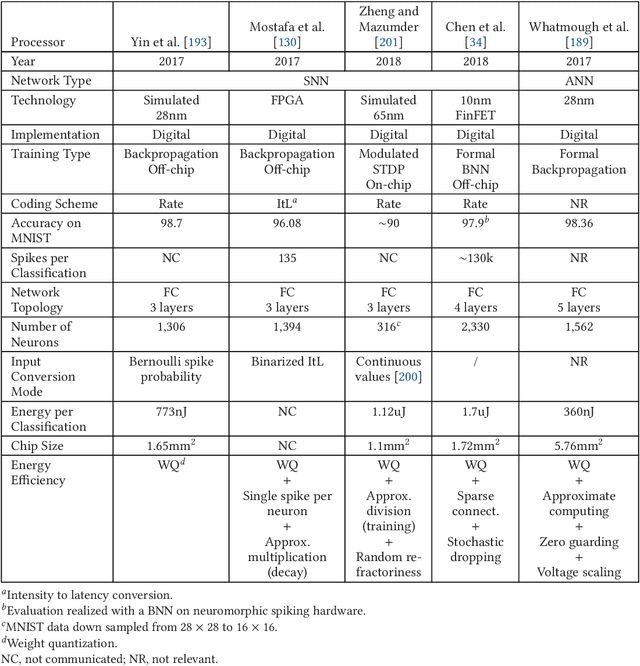Edith Beigné
Spiking Neural Networks Hardware Implementations and Challenges: a Survey
May 04, 2020



Abstract:Neuromorphic computing is henceforth a major research field for both academic and industrial actors. As opposed to Von Neumann machines, brain-inspired processors aim at bringing closer the memory and the computational elements to efficiently evaluate machine-learning algorithms. Recently, Spiking Neural Networks, a generation of cognitive algorithms employing computational primitives mimicking neuron and synapse operational principles, have become an important part of deep learning. They are expected to improve the computational performance and efficiency of neural networks, but are best suited for hardware able to support their temporal dynamics. In this survey, we present the state of the art of hardware implementations of spiking neural networks and the current trends in algorithm elaboration from model selection to training mechanisms. The scope of existing solutions is extensive; we thus present the general framework and study on a case-by-case basis the relevant particularities. We describe the strategies employed to leverage the characteristics of these event-driven algorithms at the hardware level and discuss their related advantages and challenges.
 Add to Chrome
Add to Chrome Add to Firefox
Add to Firefox Add to Edge
Add to Edge